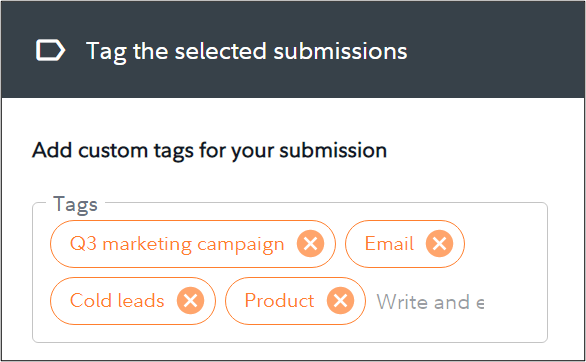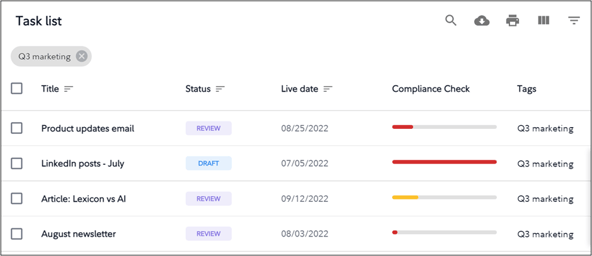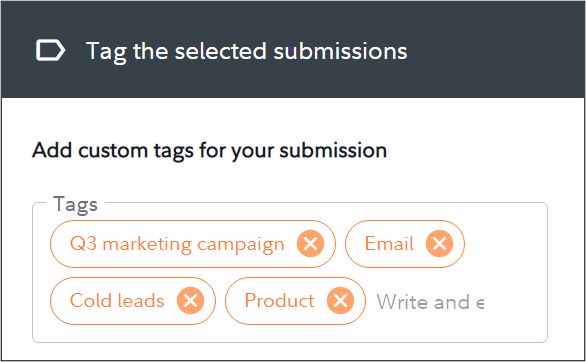Marketers and compliance teams are accustomed to juggling many tasks each day. But it can be challenging to remember the details and interrelationships of all that we work on, especially with materials constantly moving into and out of compliance review. Though workflow systems display submission statuses – such as “under review” or “approved” – they typically don’t have other features to help keep you organized or help you view submissions by channel, audience, or campaign, for example.
That’s where tags can come in handy. Tags are a way of labeling, grouping, and organizing submissions so that everyone can understand the context of the piece, whether they’re a content creator, subject matter expert, or compliance officer. Think of tags like a filing system – they can be keywords, names, processes, or whatever you choose. There’s lots of flexibility in what tags you include and how you use them.
Though team members often work on pieces individually, it’s important for both creators and reviewers to understand the relationship between pieces. Tags are the metadata and organizing information that marketers and compliance officers can use to properly evaluate pieces throughout the review process. They make consistency across materials or campaigns easier.
White paper → Considering AI solutions for your business? Ask the right questions.
The point of tags is to allow all users to incorporate important aspects of the submission to signal the broader context of the piece to the teams. In other words, tags allow you to effortlessly link and track things like:
- Campaigns
- Audiences
- Channels
- Topics
- Product types
- Performance types
- Regions
- Languages
- Etc.
For example, the tags for a sales email might look like this:
- Campaign: Q3 marketing
- Channel: email
- Audience: cold leads
- Topic: product

Saifr allows users to create custom tags or choose from default tags set by the organization. From the moment a submission is created, users can easily add tags at any point in the process until the submission is approved. And in Saifr’s dashboard you can filter submissions by their tags, allowing you to see all the submissions with that tag. Below, we filtered our submissions to see our Q3 marketing pieces:

With tags, a compliance officer can check other pieces in the campaign before reviewing new material, allowing for consistent review and approval across the company. Additionally, tags can come in handy while updating soon-to-expire content, since they help recall connections and ensure materials are reviewed and extended or cancelled uniformly. An added benefit of tags is that they accommodate and simplify document storage, which helps with audits and reporting. Tags help everyone understand what’s in the submission and the interrelationships so that they can effectively work on and review each piece in context. They’re a useful tool for both marketers and compliance officers throughout the compliance review process and ultimately make the process smoother and simpler.
Are you considering AI solutions for your business? Make sure to ask the right questions.
1038001.2.0


-1.png)




